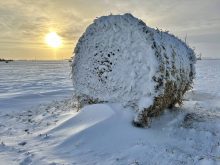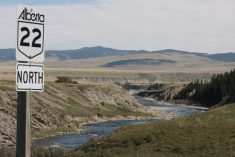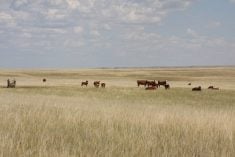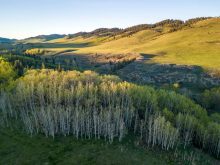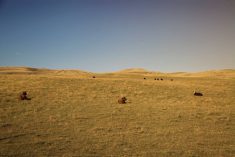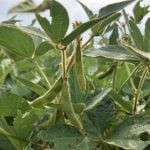Alberta producers are finding a way to make their marginal lands pay, with a little help from Ducks Unlimited Canada (DUC).
“Not all parts of a field are created equal,” said Darwin Chambers, head of DUC’s conservation programs in Alberta. “There can be certain areas of a field — often low-lying areas — that just aren’t profitable due to poor growing conditions. So producers are looking for alternatives to turn that land into something that produces benefits and finding that conservation has a place there.”
The benefits of wetland conservation and restoration are well known: filtering and storing water; building biodiversity; creating a buffer for drought or flood events. But in many cases, farmers don’t even realize they have wetland restoration opportunities, said Chambers.
Read Also

Grazing ‘sweet spot’ boosts pasture performance
Timing-focused approach to pasture management touted to boost forage growth, livestock gains while also cutting farmer labour and inputs
“A lot of the wetland drainage happened many years ago — sometimes generations ago — so farmers view them as low areas that are unproductive,” he said. “But it may actually be a wetland restoration opportunity.”
Restoration costs are entirely funded by DUC, but beyond that, the projects create a more profitable operation, he added.
“Rather than sitting there fighting Mother Nature and trying to farm something that is just not producing, it’s oftentimes beneficial to look at a wetland restoration program,” said Chambers. “The financial incentives offered through it are enticing.”
That was what initially drew Kolton Kasur and his family to install a DUC project on their Black Angus and Black Simmental seedstock operation near Bashaw.
“Initially the decision was somewhat self-serving,” said Kasur. “When DUC approached us about the first project, we were dealing with a drought, and a few years before that, the beef industry was under pressure from the BSE situation. So to be completely candid, the compensation was a big factor for the ranch at that point in time.”
But it wasn’t long before they started to realize other benefits of the 50-acre spillway project.
“The true value of the conservation project wasn’t realized until it was completed,” he said. “It really supercharged the ecosystem. The surrounding grasses really took off, and there’s an abundance and variety of bird species, not just waterfowl, throughout that pasture.
“It was a real eye-opener to the value of wetland habitat to the ecosystem. It’s Dad’s favourite place on the ranch to check cows. He’s down there just about every day seven months out of the year. It’s created a little oasis on the prairie.”

Repurposing the land
A few years later, the family approached DUC about doing a similar project at another location — a 30-acre spillway on his grandparents’ farm.
“Growing up we always called this spot ‘the big slough,’” he said. “We don’t really know why, but over the years, whether it was due to waterways being changed or trees being cleared, reducing snowpack run-off on neighbouring properties, it slowly began to dry up.”
That work was completed last year, and as a result of these two projects, the Kasurs secured a reliable source of water — something which proved its worth during last year’s drought.
“Thanks to this project, we had access to fresh water for the cattle all year and the grass in that pasture lasted longer and was more resilient.”
Shifting these marginal lands to conservation projects “wasn’t much of a struggle,” he added.
“You’re not really taking it out of production as much as you are repurposing it, often for a job it is much more effective at. In a crop scenario, the lowlands surrounding a wetland typically hold water in the spring, so you get poor germination during seeding and end up wasting costly inputs like seed and fertilizer. Then you usually just end up with a few stunted plants anyways.
“In a livestock operation, they are typically too soft and peaty for cattle to graze in, and they can cause issues like foot rot.”
DUC recently launched another program to help Alberta producers manage their marginal lands. After two years of successfully running in Saskatchewan and Manitoba, the Marginal Areas Program has expanded to Alberta and will offer a financial incentive of $125 per acre to seed unproductive annual cropland to forages.
“The program is designed to help producers increase their profits while farming fewer acres — essentially farm less and make more,” said Janine Paly, agricultural programs and extension specialist at DUC in Alberta.
As the owner of a mixed operation north of Edmonton, Paly has been seeding her own marginal lands to forage to help with wet, peaty soils that have low productivity and cause headaches at harvest.
“We’re looking at it from a cost-recovery perspective,” she said. “When you’re putting inputs in and you’re getting very few bushels per acre back, you really have to evaluate it and ask yourself if there are better options out there.”
Seeding the areas to forages made sense for Paly’s 2,400-acre operation. In wet years, their combine and tractor aren’t getting stuck anymore, and in dry years, the soil is better able to conserve water, leading to better hay crops.
“In a year like last year where a lot of us experienced drought, that lower peaty land capitalized on the water in the soil, and we were able to produce large amounts of hay crop for our livestock,” she said, adding grain farmers could either leave those areas idle or have neighbours cut them for hay.
“We’re really not looking for a large-scale crop conversion,” she said. “This program will be capped out at 40 acres per quarter, so it’s more for those smaller areas a grower is struggling with, whether because it’s saline or a clubroot area or they’re not seeing a return on their investment because of the soil profile.”
For Kasur, working with DUC has changed the way he looks at his land.
“You take care of it and it will take care of you,” he said. “We ask a lot of the land. We want it to grow our crops and feed our cattle, yet across the landscape, we see more and more trees being cleared, sloughs being drained, and native grass being tore up and converted into other purposes.
“I think sometimes we can forget that we need to take care of the land, too. We are its last line of defence, and for some of these habitats, once they’re gone, they’re gone.”



